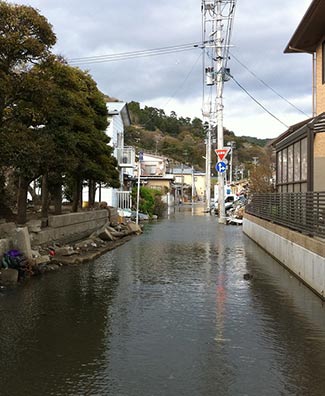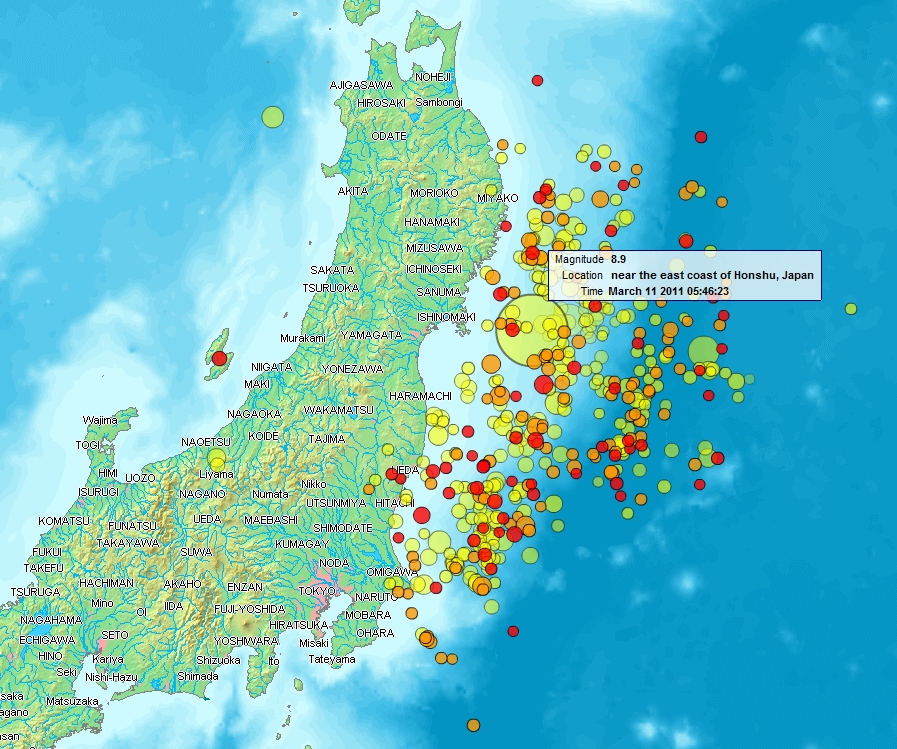According to Earthweek: A Diary of the Planet (available on our website at Earth Gate, Weekly News) “Some streets in Ishinomaki now flood at high tide as water pours up through cracks in the ground. The massive lurch in the Earth’s surface during March’s disastrous earthquake and tsunami in Japan sank several coastal communities so low that they are now inundated twice a day on average by the normal rising of the tide. Those communities that sustained the most damage, especially to their seawalls, face the greatest daily inundations. Residents in the worst-affected communities now resort to donning rubber boots or riding bicycles when the Pacific Ocean rises into their neighborhoods or shopping areas. Japan’s northeast coast shifted horizontally by 17 feet and sank by as much as 4 feet in some areas. While most houses unscathed by the twin disasters still sit far enough above the new sea level to escape the tide, the new and permanent geological reality has swamped many of their sewage systems, making toilets unusable.”
“The quake moved portions of northeastern Japan by as much as 2.4 m (7.9 ft) closer to North America, making portions of Japan’s landmass wider than before. Portions of Japan closest to the epicenter experienced the largest shifts. A 400 km (250 mi) stretch of coastline dropped vertically by 0.6 m (2.0 ft), allowing the tsunami to travel farther and faster onto land. One early estimate suggested that the Pacific plate may have moved westwards by up to 20 m (66 ft), and another early estimate put the amount of slippage at as much as 40 m (130 ft). On 6 April the Japanese coast guard said that the quake shifted the seabed near the epicenter 24 meters (79 ft.) and elevated the seabed off the coast of Miyagi prefecture by 3 meters. The earthquake shifted the Earth’s axis by 25 cm (9.8 in). This deviation led to a number of small planetary changes, including the length of a day and the tilt of the Earth. The speed of the Earth’s rotation increased, shortening the day by 1.8 microseconds due to the redistribution of Earth’s mass. The axial shift was caused by the redistribution of mass on the Earth’s surface, which changed the planet’s moment of inertia. Because of conservation of angular momentum, such changes of inertia result in small changes to the Earth’s rate of rotation” (source).




